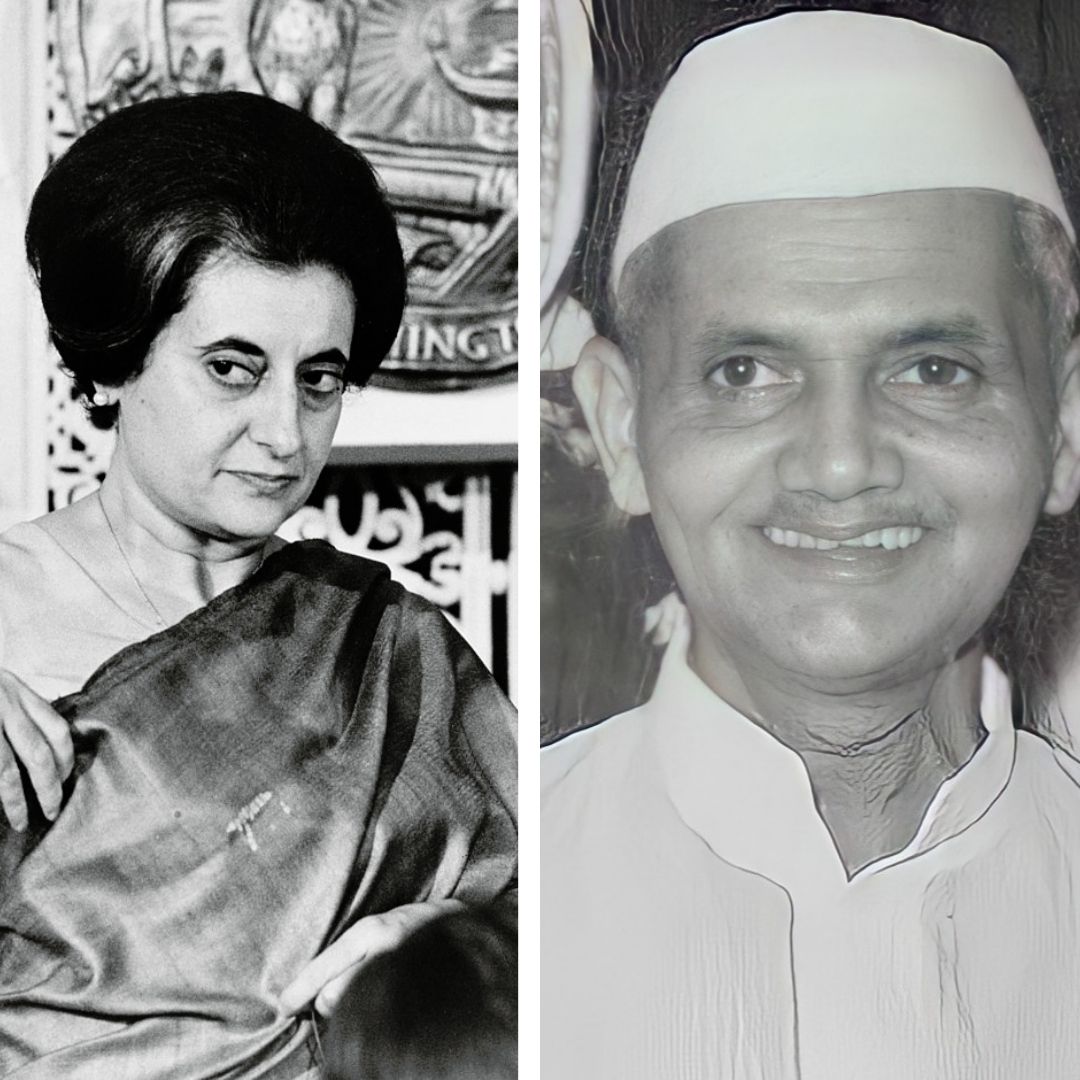How Did Lal Bahadur Shastri's Sudden Demise Pave The Way For Indira Gandhi's Political Career?
Writer: Tashafi Nazir
For most people, journalism sounds hectic and chaotic. For her, it's a passion she has been chasing for years. With an extensive media background, Tashafi believes in putting efforts on presenting a simple incident in the most interesting way.
India, 19 Jan 2022 10:07 AM GMT
Editor : Shiva Chaudhary |
A post-graduate in Journalism and Mass Communication with relevant skills, specialising in content editing & writing. I believe in the precise dissemination of information based on facts to the public.
Creatives : Tashafi Nazir
For most people, journalism sounds hectic and chaotic. For her, it's a passion she has been chasing for years. With an extensive media background, Tashafi believes in putting efforts on presenting a simple incident in the most interesting way.
It was January 19, 1966, when Indira Gandhi was elected leader of the Congress party after Lal Bahadur Shastri's death. She became the Prime Minister of India in a compromise between the party's right and left wings and after a bitter contest with Morarji Desai.
On January 11, 1966, a massive crowd of Indian politicians, government officials, military officers, heads of states of other countries and the public had thronged New Delhi's Palam Airport. They were waiting for a small Soviet aircraft that was bringing in the dead body of the country's second Prime Minister, Lal Bahadur Shastri. Just a few hours ago, India had woken up to their PM'S sudden death in Tashkent, Uzbekistan. A sense of uncertainty over India's political future gripped the environment. Many people had come to the airport to mourn Shastri's death and some to get their leader's last glimpse. But one person was there for a more explicit purpose. Clad in white khadi, an astrologer consulted by top-level Congress politicians, was there to predict the next Prime Minister.
Debate Over Next PM
As former journalist Arta Mishra writes, no one had anticipated Shastri's death at that time, and hence there was no discussion over the issue of his succession. A few hours after his death, the President had sworn in Gulzari Lal Nanda, then home minister, as the acting Prime Minister in the middle of the night. But he was considered a lightweight, unlikely to turn his position permanent. Within a day, he threw his hat in the ring to be regarded as the next Prime Minister like others. Within a couple of days of Shastri's death, the list of politicians circling the throne had grown considerably, including defence minister YB Chavan, Mahashtrian politician SK Patil and the future President of India Sanjiva Reddy. But the strongest candidate was Morarji Desai.
Desai had already had bitter experience in his ambition to be India's Prime Minister. In the early 1960s, Desai was a power centre within the Congress Party. He emerged as the party's opposing pole to Nehru as a right-leaning, pro-business conservative leader. As the finance minister in Nehru's Government, Desai had become influential as to be considered by many as his natural successor, to the extent that he got the treatment reserved for visiting heads of state in some of his foreign visits. Had Nehru not eased him out of the cabinet in 1963, he would have most likely become the next PM automatically.
Advantage For Indira Gandhi
On the other hand, Indira Gandhi's political career had been in limbo in the last two years. Although she was one of the most recognised figures in Indian politics, her strength had played against her when Shastri had become the PM. While Shastri had recognised that he needed Gandhi's support, he did not want to give her much momentum to grow into a challenger to his own position. Shastri had made her Information and Broadcasting Minister in his cabinet but kept her at arm's length. In 1964-65, the difference between the two had grown. Shastri most likely was considering pushing her out of the cabinet before his sudden death. Disgruntled with her stalled career, even Gandhi contemplated leaving New Delhi and moving to England for a few years.
In the morning of January 11, 1966, this equation changed when she woke up by a phone call informing her of Shastri's death. She immediately began seeking advice from others about her possible candidacy as his successor. Within two days, she had made up her mind. Privately, she was willing to throw her hat in the ring. Officially, she maintained that she would consider the position if Congress leaders asked her.
And the leaders did – instead, Kamaraj did. He correctly judged her to be the only possible challenger to Desai. The Congress party respected her; she had the legacy of Nehru and name recognition that no other candidate had. In addition, she was not too strong and would need Syndicate's support to run the country.
Kamaraj was convinced that party insiders called 'Syndicates' could control Gandhi and continue their roles as the power behind the throne. Kamaraj mobilised his considerable influence and got her endorsements from most of the state Chief Ministers and eventually all the Syndicate members. Gandhi became strong enough to challenge Desai with such strong support behind her.
Desai was adamant about seeing this struggle through with the prize twice snatched from under his nose. He demanded an open election within the Congress of all of the party's MPs. Syndicate members mobilised their home states, delivering Gandhi support from the southern states, Maharashtra and West Bengal. Desai could only carry his home state of Gujarat and the minor factions from Bihar and Uttar Pradesh. Finally tally had Indira Gandhi leading with 355 votes to Desai's 169.
Finally, India got its new Prime Minister on January 19, 1966.
Also Read: Kerala Startup Launches World's First WhatsApp-Powered Delivery Service
 All section
All section















